Wen Lu
EyeSim-VQA: A Free-Energy-Guided Eye Simulation Framework for Video Quality Assessment
Jun 13, 2025Abstract:Free-energy-guided self-repair mechanisms have shown promising results in image quality assessment (IQA), but remain under-explored in video quality assessment (VQA), where temporal dynamics and model constraints pose unique challenges. Unlike static images, video content exhibits richer spatiotemporal complexity, making perceptual restoration more difficult. Moreover, VQA systems often rely on pre-trained backbones, which limits the direct integration of enhancement modules without affecting model stability. To address these issues, we propose EyeSimVQA, a novel VQA framework that incorporates free-energy-based self-repair. It adopts a dual-branch architecture, with an aesthetic branch for global perceptual evaluation and a technical branch for fine-grained structural and semantic analysis. Each branch integrates specialized enhancement modules tailored to distinct visual inputs-resized full-frame images and patch-based fragments-to simulate adaptive repair behaviors. We also explore a principled strategy for incorporating high-level visual features without disrupting the original backbone. In addition, we design a biologically inspired prediction head that models sweeping gaze dynamics to better fuse global and local representations for quality prediction. Experiments on five public VQA benchmarks demonstrate that EyeSimVQA achieves competitive or superior performance compared to state-of-the-art methods, while offering improved interpretability through its biologically grounded design.
FCA2: Frame Compression-Aware Autoencoder for Modular and Fast Compressed Video Super-Resolution
Jun 13, 2025Abstract:State-of-the-art (SOTA) compressed video super-resolution (CVSR) models face persistent challenges, including prolonged inference time, complex training pipelines, and reliance on auxiliary information. As video frame rates continue to increase, the diminishing inter-frame differences further expose the limitations of traditional frame-to-frame information exploitation methods, which are inadequate for addressing current video super-resolution (VSR) demands. To overcome these challenges, we propose an efficient and scalable solution inspired by the structural and statistical similarities between hyperspectral images (HSI) and video data. Our approach introduces a compression-driven dimensionality reduction strategy that reduces computational complexity, accelerates inference, and enhances the extraction of temporal information across frames. The proposed modular architecture is designed for seamless integration with existing VSR frameworks, ensuring strong adaptability and transferability across diverse applications. Experimental results demonstrate that our method achieves performance on par with, or surpassing, the current SOTA models, while significantly reducing inference time. By addressing key bottlenecks in CVSR, our work offers a practical and efficient pathway for advancing VSR technology. Our code will be publicly available at https://github.com/handsomewzy/FCA2.
The Athenian Academy: A Seven-Layer Architecture Model for Multi-Agent Systems
Apr 18, 2025Abstract:This paper proposes the "Academy of Athens" multi-agent seven-layer framework, aimed at systematically addressing challenges in multi-agent systems (MAS) within artificial intelligence (AI) art creation, such as collaboration efficiency, role allocation, environmental adaptation, and task parallelism. The framework divides MAS into seven layers: multi-agent collaboration, single-agent multi-role playing, single-agent multi-scene traversal, single-agent multi-capability incarnation, different single agents using the same large model to achieve the same target agent, single-agent using different large models to achieve the same target agent, and multi-agent synthesis of the same target agent. Through experimental validation in art creation, the framework demonstrates its unique advantages in task collaboration, cross-scene adaptation, and model fusion. This paper further discusses current challenges such as collaboration mechanism optimization, model stability, and system security, proposing future exploration through technologies like meta-learning and federated learning. The framework provides a structured methodology for multi-agent collaboration in AI art creation and promotes innovative applications in the art field.
CognitionCapturer: Decoding Visual Stimuli From Human EEG Signal With Multimodal Information
Dec 13, 2024



Abstract:Electroencephalogram (EEG) signals have attracted significant attention from researchers due to their non-invasive nature and high temporal sensitivity in decoding visual stimuli. However, most recent studies have focused solely on the relationship between EEG and image data pairs, neglecting the valuable ``beyond-image-modality" information embedded in EEG signals. This results in the loss of critical multimodal information in EEG. To address this limitation, we propose CognitionCapturer, a unified framework that fully leverages multimodal data to represent EEG signals. Specifically, CognitionCapturer trains Modality Expert Encoders for each modality to extract cross-modal information from the EEG modality. Then, it introduces a diffusion prior to map the EEG embedding space to the CLIP embedding space, followed by using a pretrained generative model, the proposed framework can reconstruct visual stimuli with high semantic and structural fidelity. Notably, the framework does not require any fine-tuning of the generative models and can be extended to incorporate more modalities. Through extensive experiments, we demonstrate that CognitionCapturer outperforms state-of-the-art methods both qualitatively and quantitatively. Code: https://github.com/XiaoZhangYES/CognitionCapturer.
MKANet: A Lightweight Network with Sobel Boundary Loss for Efficient Land-cover Classification of Satellite Remote Sensing Imagery
Jul 28, 2022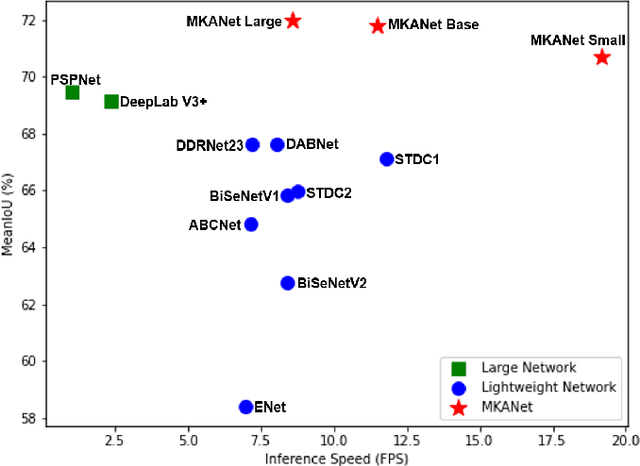


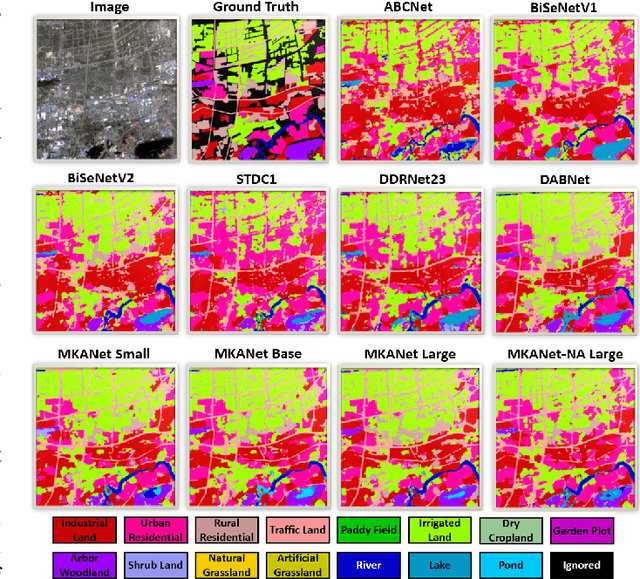
Abstract:Land cover classification is a multi-class segmentation task to classify each pixel into a certain natural or man-made category of the earth surface, such as water, soil, natural vegetation, crops, and human infrastructure. Limited by hardware computational resources and memory capacity, most existing studies preprocessed original remote sensing images by down sampling or cropping them into small patches less than 512*512 pixels before sending them to a deep neural network. However, down sampling images incurs spatial detail loss, renders small segments hard to discriminate, and reverses the spatial resolution progress obtained by decades of years of efforts. Cropping images into small patches causes a loss of long-range context information, and restoring the predicted results to their original size brings extra latency. In response to the above weaknesses, we present an efficient lightweight semantic segmentation network termed MKANet. Aimed at the characteristics of top view high-resolution remote sensing imagery, MKANet utilizes sharing kernels to simultaneously and equally handle ground segments of inconsistent scales, and also employs parallel and shallow architecture to boost inference speed and friendly support image patches more than 10X larger. To enhance boundary and small segments discrimination, we also propose a method that captures category impurity areas, exploits boundary information and exerts an extra penalty on boundaries and small segment misjudgment. Both visual interpretations and quantitative metrics of extensive experiments demonstrate that MKANet acquires state-of-the-art accuracy on two land-cover classification datasets and infers 2X faster than other competitive lightweight networks. All these merits highlight the potential of MKANet in practical applications.
Do Deep Neural Networks Always Perform Better When Eating More Data?
May 30, 2022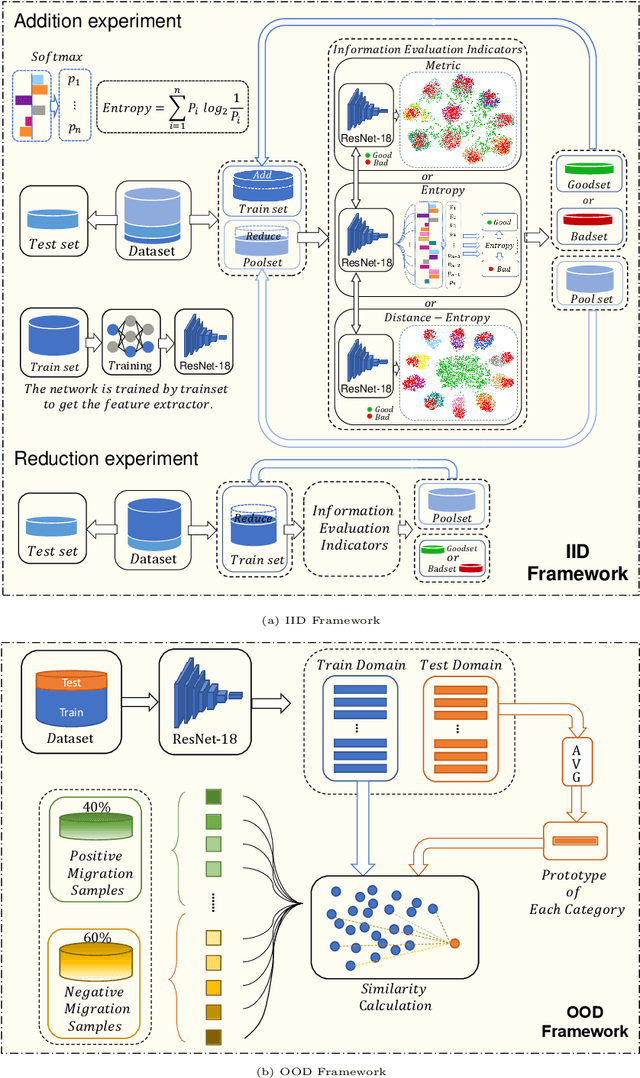

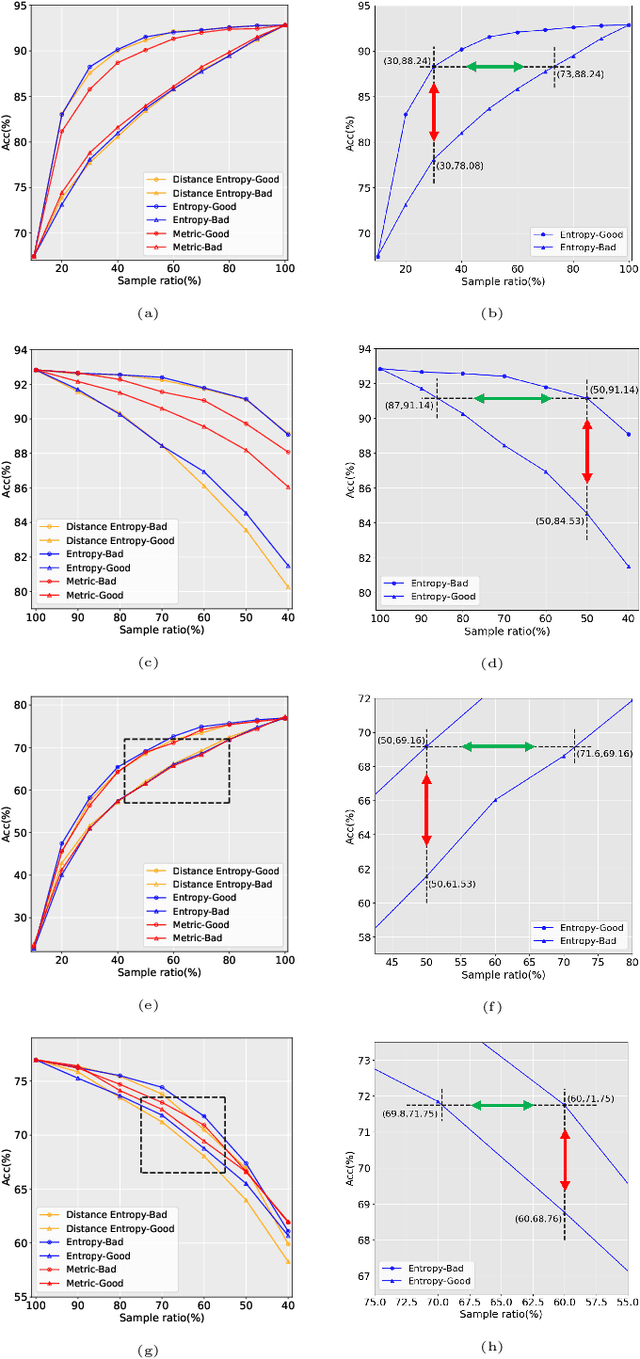
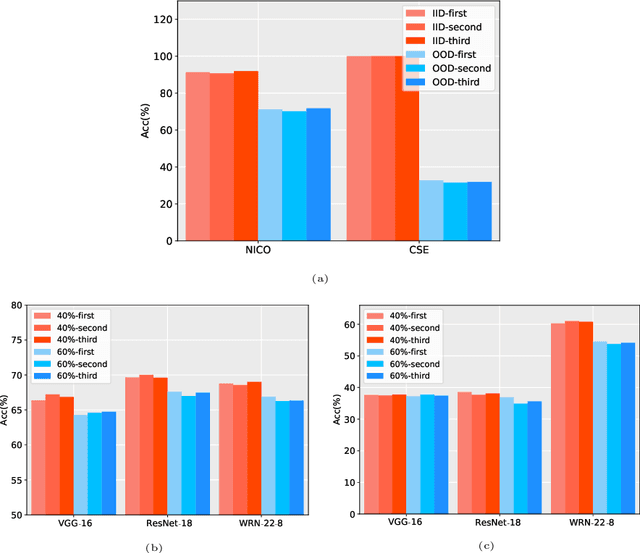
Abstract:Data has now become a shortcoming of deep learning. Researchers in their own fields share the thinking that "deep neural networks might not always perform better when they eat more data," which still lacks experimental validation and a convincing guiding theory. Here to fill this lack, we design experiments from Identically Independent Distribution(IID) and Out of Distribution(OOD), which give powerful answers. For the purpose of guidance, based on the discussion of results, two theories are proposed: under IID condition, the amount of information determines the effectivity of each sample, the contribution of samples and difference between classes determine the amount of sample information and the amount of class information; under OOD condition, the cross-domain degree of samples determine the contributions, and the bias-fitting caused by irrelevant elements is a significant factor of cross-domain. The above theories provide guidance from the perspective of data, which can promote a wide range of practical applications of artificial intelligence.
Regularized Deep Linear Discriminant Analysis
May 15, 2021



Abstract:As a non-linear extension of the classic Linear Discriminant Analysis(LDA), Deep Linear Discriminant Analysis(DLDA) replaces the original Categorical Cross Entropy(CCE) loss function with eigenvalue-based loss function to make a deep neural network(DNN) able to learn linearly separable hidden representations. In this paper, we first point out DLDA focuses on training the cooperative discriminative ability of all the dimensions in the latent subspace, while put less emphasis on training the separable capacity of single dimension. To improve DLDA, a regularization method on within-class scatter matrix is proposed to strengthen the discriminative ability of each dimension, and also keep them complement each other. Experiment results on STL-10, CIFAR-10 and Pediatric Pneumonic Chest X-ray Dataset showed that our proposed regularization method Regularized Deep Linear Discriminant Analysis(RDLDA) outperformed DLDA and conventional neural network with CCE as objective. To further improve the discriminative ability of RDLDA in the local space, an algorithm named Subclass RDLDA is also proposed.
Transitive Learning: Exploring the Transitivity of Degradations for Blind Super-Resolution
Mar 29, 2021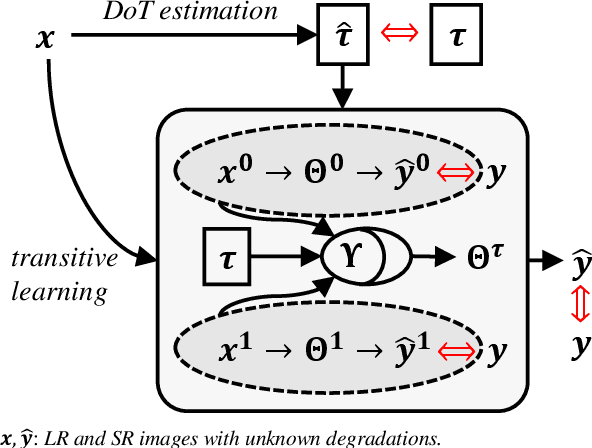
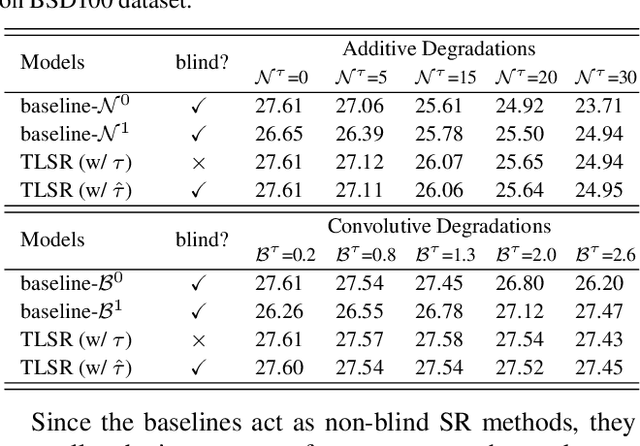
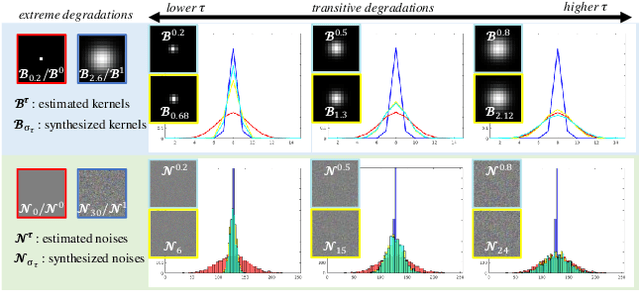
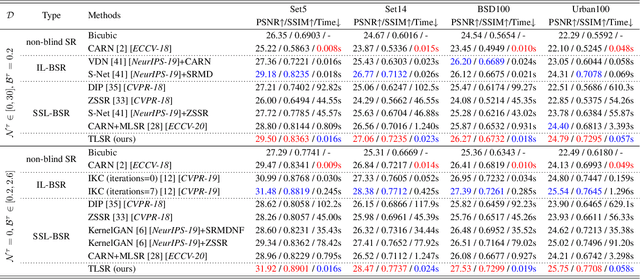
Abstract:Being extremely dependent on the iterative estimation and correction of data or models, the existing blind super-resolution (SR) methods are generally time-consuming and less effective. To address it, this paper proposes a transitive learning method for blind SR using an end-to-end network without any additional iterations in inference. To begin with, we analyze and demonstrate the transitivity of degradations, including the widely used additive and convolutive degradations. We then propose a novel Transitive Learning method for blind Super-Resolution on transitive degradations (TLSR), by adaptively inferring a transitive transformation function to solve the unknown degradations without any iterative operations in inference. Specifically, the end-to-end TLSR network consists of a degree of transitivity (DoT) estimation network, a homogeneous feature extraction network, and a transitive learning module. Quantitative and qualitative evaluations on blind SR tasks demonstrate that the proposed TLSR achieves superior performance and consumes less time against the state-of-the-art blind SR methods. The code is available at https://github.com/YuanfeiHuang/TLSR.
Interpretable Detail-Fidelity Attention Network for Single Image Super-Resolution
Sep 28, 2020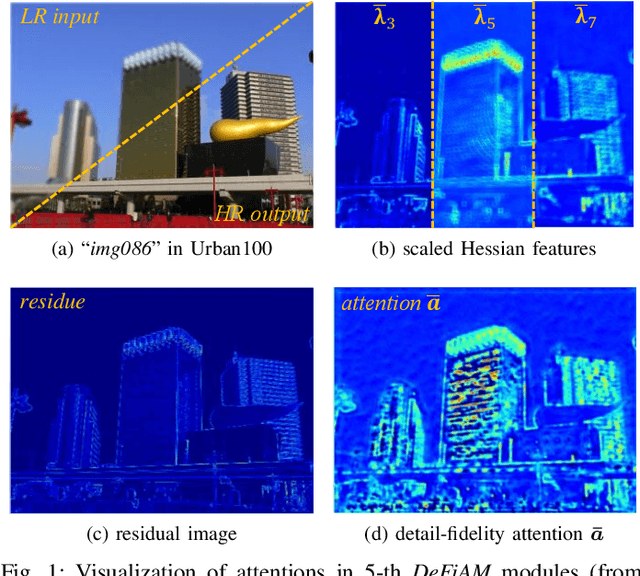
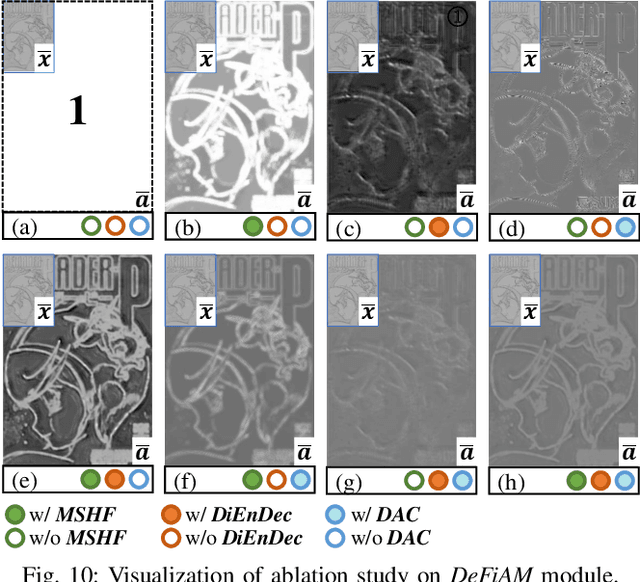
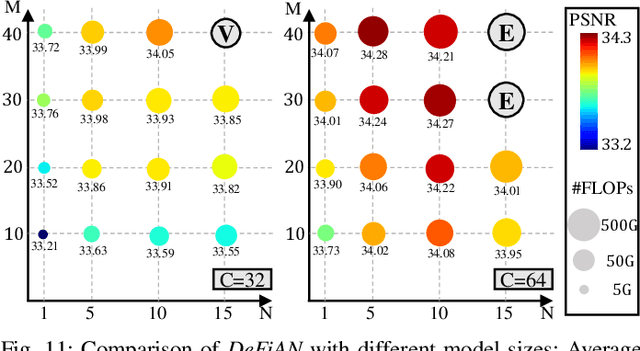
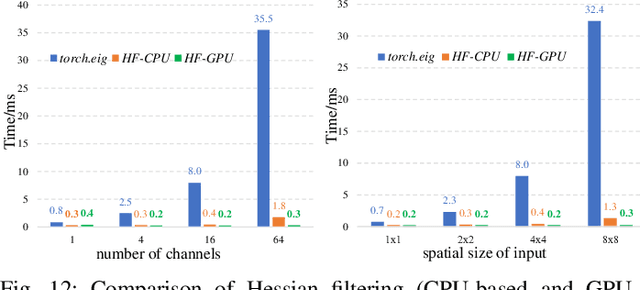
Abstract:Benefiting from the strong capabilities of deep CNNs for feature representation and nonlinear mapping, deep-learning-based methods have achieved excellent performance in single image super-resolution. However, most existing SR methods depend on the high capacity of networks which is initially designed for visual recognition, and rarely consider the initial intention of super-resolution for detail fidelity. Aiming at pursuing this intention, there are two challenging issues to be solved: (1) learning appropriate operators which is adaptive to the diverse characteristics of smoothes and details; (2) improving the ability of model to preserve the low-frequency smoothes and reconstruct the high-frequency details. To solve them, we propose a purposeful and interpretable detail-fidelity attention network to progressively process these smoothes and details in divide-and-conquer manner, which is a novel and specific prospect of image super-resolution for the purpose on improving the detail fidelity, instead of blindly designing or employing the deep CNNs architectures for merely feature representation in local receptive fields. Particularly, we propose a Hessian filtering for interpretable feature representation which is high-profile for detail inference, a dilated encoder-decoder and a distribution alignment cell to improve the inferred Hessian features in morphological manner and statistical manner respectively. Extensive experiments demonstrate that the proposed methods achieve superior performances over the state-of-the-art methods quantitatively and qualitatively. Code is available at https://github.com/YuanfeiHuang/DeFiAN.
AIM 2020 Challenge on Efficient Super-Resolution: Methods and Results
Sep 15, 2020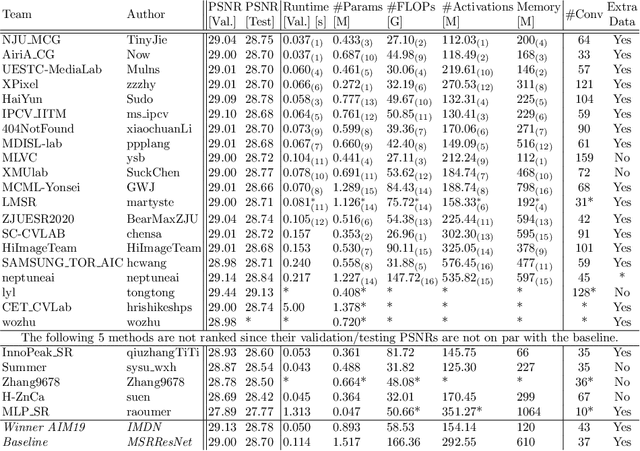
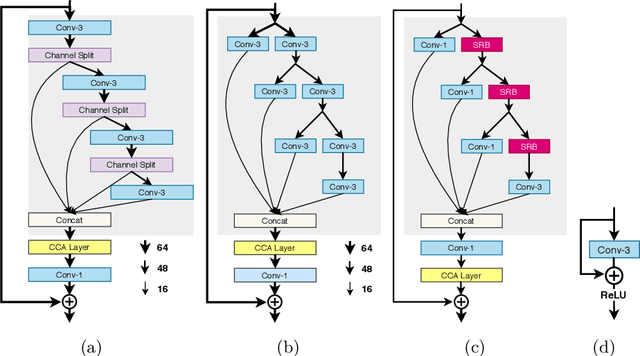

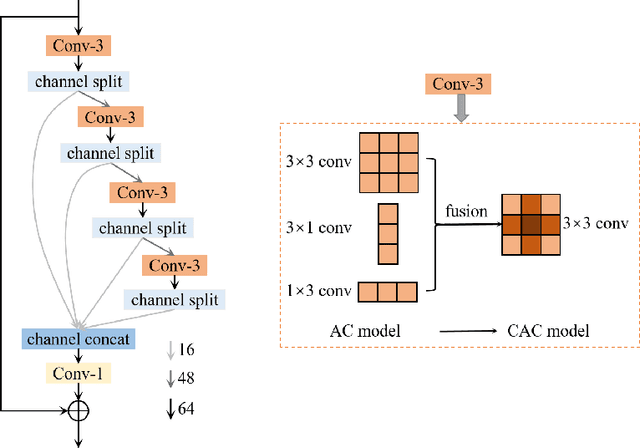
Abstract:This paper reviews the AIM 2020 challenge on efficient single image super-resolution with focus on the proposed solutions and results. The challenge task was to super-resolve an input image with a magnification factor x4 based on a set of prior examples of low and corresponding high resolution images. The goal is to devise a network that reduces one or several aspects such as runtime, parameter count, FLOPs, activations, and memory consumption while at least maintaining PSNR of MSRResNet. The track had 150 registered participants, and 25 teams submitted the final results. They gauge the state-of-the-art in efficient single image super-resolution.
 Add to Chrome
Add to Chrome Add to Firefox
Add to Firefox Add to Edge
Add to Edge